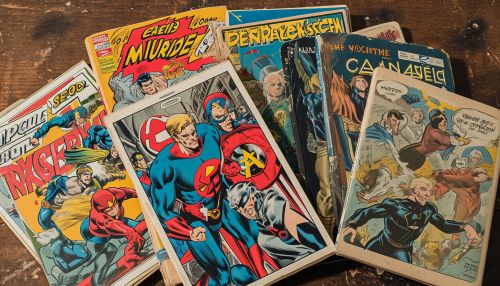Silver Age of Comic Books
Origins and Precedents
The Silver Age is a term used to describe a period of artistic advancement and commercial success in mainstream American comic books, predominantly those featuring the superhero archetype. Following the Golden Age, the Silver Age is considered to have started in the mid-1950s and lasted until the early 1970s.
The Silver Age was marked by a cultural shift; the war had ended, and the United States was entering a period of prosperity. Comics, like other forms of media, were evolving to reflect these changes. The Silver Age saw the revival of superhero archetypes, with a modern twist. These characters were often more complex, dealing with personal issues and moral dilemmas that were not present in their Golden Age counterparts.


Characteristics
The Silver Age is characterized by a number of stylistic and thematic elements that set it apart from the periods before and after it. The artwork became more dynamic and detailed, and the stories became more sophisticated, often reflecting contemporary social issues.
One of the defining characteristics of the Silver Age was the introduction of science fiction elements into superhero comics. This was a reflection of the fascination with space exploration and technology that was prevalent during the 1950s and 1960s. Superheroes were often given powers through scientific accidents or experiments gone wrong, and many stories involved travel to other planets or dimensions.
Key Figures
There were several key figures during the Silver Age who had a significant impact on the development of comic books during this period. These include writers and artists such as Stan Lee, Jack Kirby, and Steve Ditko at Marvel Comics, and Julius Schwartz, Gardner Fox, and Carmine Infantino at DC Comics. These creators were responsible for introducing many of the iconic characters and stories that are still popular today.
Impact and Legacy
The Silver Age had a profound impact on the comic book industry and popular culture in general. It saw the creation of many iconic characters, such as Spider-Man, the X-Men, and the Fantastic Four at Marvel, and the reinvention of characters like Batman, Superman, and Wonder Woman at DC. These characters have become cultural icons, with a significant presence in other media such as film and television.
The Silver Age also saw the introduction of more complex storytelling and character development in comic books. This laid the groundwork for the more mature themes and sophisticated storytelling of the Bronze Age and beyond.
